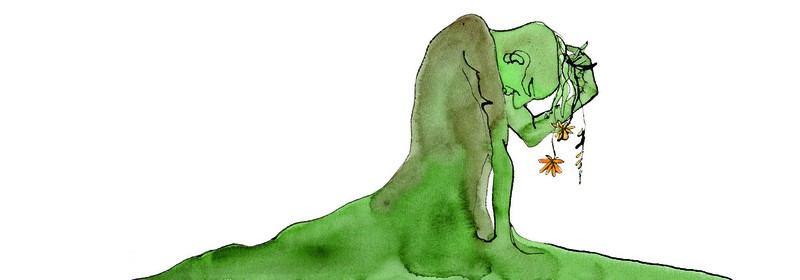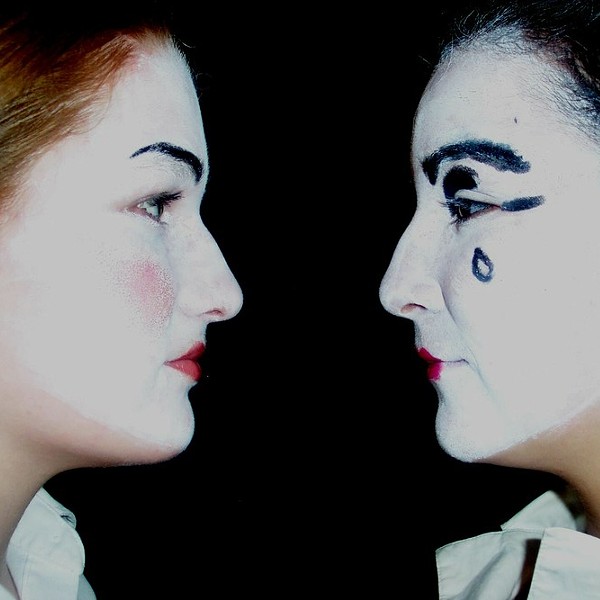Joe Ramos, interim dean of fine and performing arts at SUNY New Paltz, hung up on me—terminated the call, as he politely put it—just before replacing the handset.
A relatively new arrival, he had never heard that Parker Theater, where his students study and perform, was contaminated with PCBs and dioxins after a transformer explosion in December 1991. This gives an idea of how quiet it’s kept on campus, how taboo a subject it is. So, I explained to him the history of the incident. I described the theater, wrapped in plastic sheeting for weeks after the explosion so that rainwater would not spread the toxins further into the environment. I described the pipes freezing and bursting in January 1992 during the early phase of the cleanup, and the hundreds of toxic waste barrels that were used to collect the contaminated water.
I told him I didn’t know whether the theater’s costume collection had been thrown out after the building fogged over with dioxin- and furan-laced smoke, or whether students were still performing in clothing that could never be cleaned and only be tested by being destroyed. I explained how PCB smoke works its way into crawl spaces, above hung ceilings and into pipe chases, and how, once the contamination has seeped in everywhere, it verges on impossible to get a building clean.
I assured the dean that his bosses and their bosses would give him a very different story: a blanket reassurance of safety and the usual line that I am the one who has a problem.
He was angry. I was not surprised.
I was nervous, and angry, and emotional, which did surprise me. After covering dioxins for nearly two decades I thought nothing could shake me, but recently the issue had become personal. Now I was friends with someone who was about to enter the theater department; a talented, fragile young woman who would be one of the vulnerable.
SUNY New Paltz excels in one area, the arts. Getting into this program was an achievement for her. She deserved this, and she deserved a lot better. Given the choice, I told her, it’s better to delay school by one year than get leukemia or endometriosis. After she left, I picked up the phone.
Psychology of a cover-up
Having hung up on me, threatening to check my journalistic credentials without even taking my name or phone number, I rang back Dean Ramos’s secretary to pass along my contact information. While I had her attention, I explained the issue.
There are not a lot of people on the New Paltz campus who will speak to me, and I’ve heard that professors are concerned about the theater, but are also afraid even to be seen with me, fearing for their jobs. I told her about the parents who on opening day, having heard about the contaminated dormitories and academic buildings, leave their sons and daughters on campus without asking questions. I told her about the people who call me to find out whether their brain cancer, diabetes, or other endocrine disease has come from their time attending the college, five or 10 years after the fact.
Hearing about the issue in the first days at school, many students are afraid to tell their parents—my friend said even hers would be angry to hear about it. Angry at whom? At her? At me? I’ve rarely heard a parent get angry at a campus administration that is 100-percent responsible for the lives of its students, under an old common law principle called in loco parentis.
I mentioned to the secretary how the college administration had called the police on me so many times for reporting on campus it had become a running joke between me and the cops. “Your campus needs psychologists,” I told her, “not toxicologists, to figure out why this is happening.”
It is often said that a university is a microcosm of the world. If this is true, we can get a good idea why environmental issues are still a boutique news item, despite the general contamination of the ecosphere, and the fact that we all know toxic chemicals are bad for us.
By general contamination, I am referring to hormonally active toxins, which range from heavy metals to plasticisers to dioxins and PCBs. Our society is awash with these substances, which act like hormones, scrambling the body’s signals, compromising the immune system and damaging the genetic code. By awash, I mean present in every breath of air and nearly every bite of food.



















